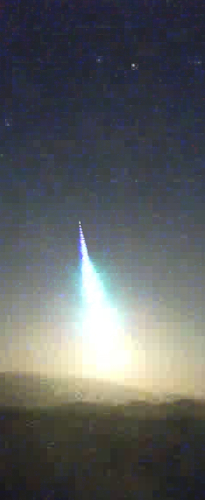

 October is being a great month concerning fireballs.
October is being a great month concerning fireballs.
On October 14th, at 18h46 UT (20h46 Spanish local time), another impressive fireball could be registered with the SMART Project’s detectors operated at Calar Alto (Almería), La Hita (Toledo), La Sagra (Granada), Sierra Nevada (Granada), Huelva and Seville observatories.
In this occasion, two of the external cameras located at Calar Alto Observatory, in Almería, could record the total path of this event, from its beginning to its explosive end.
As it’s usual, Professor José María Madiedo (Instituto de Astrofísica de Andalucía IAA-CSIC), PI of the SMART Project, has achieved the preliminary analysis of this phenomena.
Following his conclusions, this event had an asteroidal origin, causing a detached fragment to enter in our atmosphere at an estimated speed of about 53.000 km/h.
The luminous part of the event started at an altitude of 93 km just in front of Cádiz, in Andalusia's Atlantic coasts. The object then moved north and finished at an altitude of 18 km above Cádiz province.
Some direct witnesses have commented on the green contrail that accompanied the object. This color can even be seen in the images (top and left) and videos shown. Besides, the final fulgurations of this fireball, converted the night into day.
The top-right picture shows the path this object followed above the ground.
It is not ruled out that this fireball has produced meteorites.
Below are the two impressive videos captured with the external southwest cameras operated at Calar Alto Observatory, in Almería.
Calar Alto (CAHA) fireball detection station, together with the one at the Observatory of Sierra Nevada (IAA-CSIC) and others placed at different locations in Spain, are part of the S.M.A.R.T. project led by Professor José María Madiedo (IAA) to track that kind of objects. Specifically, Calar Alto (CAHA) station and the one at Sierra Nevada (IAA-CSIC) constitute a collaboration agreement between the IAA researcher José María Madiedo and both institutions.
 English (UK)
English (UK)
